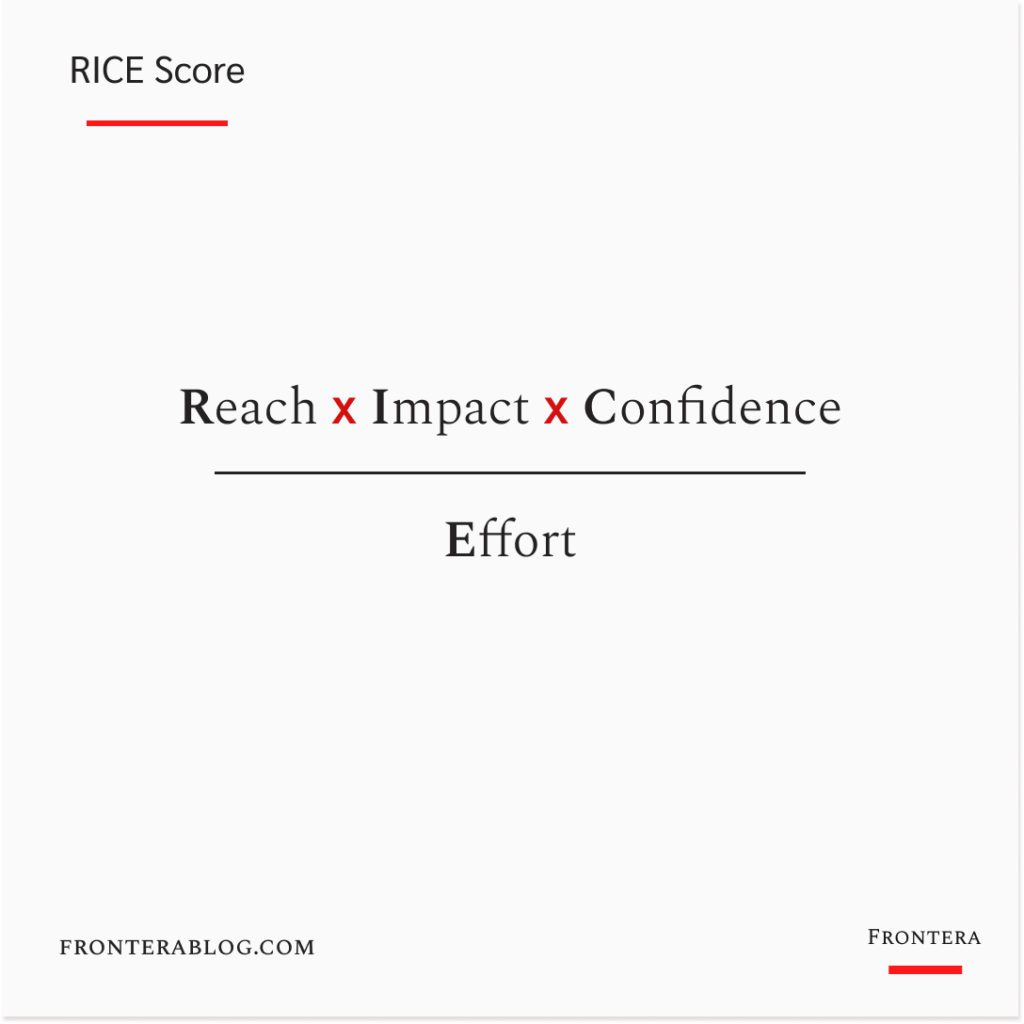“This is done, what’s next?”
That’s what you ask yourself after finishing a project.
It seems trivial, but it’s the most important question that defines your results over the long term.
Why?
Well, most people believe productivity is doing a lot.
But that’s an illusion.
Real productivity comes from doing the work that brings you the best results.
So it’s about doing the right things, repeatedly.
And sometimes the high-impact action is obvious, but it requires too much effort.
Or the chances of getting that impact are uncertain.
So how can you choose the best thing to work on?
Measure first with the RICE score. Choose later
That’s when the RICE score comes in to help.
It’s a method of product management. Product managers use it to decide on the next feature to implement.
But you can also use it to find the best project to work on.
It helps to put unclear factors into numbers.
So you can compare different activities (or features) and choose the best one.
RICE stands for reach, impact, confidence, and effort:
- Reach: How many people, leads, or customers the project will reach
- Impact: What’s the impact of the project on your goal
- Confidence: Chances of getting the impact
- Effort: The cost (time and money) of the project
And the formula goes like this:

Now, you can use different measures in the formula.
If you have real numbers (like the number of customers or a concrete time for effort), use that. If not, make an estimation.
The key point is using the same measure for different projects to compare accurately.
Let’s make it concrete with a real example.
An example of RICE scoring
I’ve spent the last few weeks focusing on SEO and building Frontera premium.
So I was thinking about what to do next to grow the newsletter.
I came up with three options:
- Focus on social media
- Buy ads
- Build a referral program
To use the RICE formula, I estimated the reach, impact, and effort of three projects relative to each other.
And gave points out of 10 with a confidence level.
Focus on social media
Reach: 8
Impact: 9
Confidence: 40%
Effort: 8
RICE Score: 3.6
Buy ads
Reach: 6
Impact: 6
Confidence: 90%
Effort (including cost): 10
RICE Score: 3.24
Build a referral program
Reach: 3
Impact: 6
Confidence: 70%
Effort: 3
RICE Score: 4.2
Before this, I was thinking of focusing on my personal Twitter account next.
But after putting things in numbers using RICE; building a referral program seems like the best option thanks to its low effort.
So I decided to choose the referral program as my next project.
If you also have lots of ideas and can’t decide what to do next, use RICE scores to find the right action to get the best results.
P.S. Here’s a simple sheet to use it.
Enjoyed this article?
Then you’ll love the How Brands Win Newsletter.
Get the “7 Positioning Sins That Cost B2B Brands Millions” guide when you join. It’s free.
References: RICE formula was developed by Sean McBride, Intercom.
